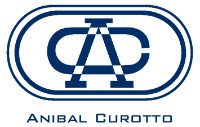Comprehending the Characteristics of Collaborative Knowing
In today’s increasingly interconnected globe, the capacity to function collaboratively is a critical skill. As traditional educational paradigms evolve to satisfy the demands of the 21st century, joint understanding emerges as a critical principle. This article delves into the complexities of collective knowing, discovering its benefits, strategies, and obstacles, while supplying understandings into just how it forms contemporary education.
Collective learning exceeds simply working together.

It symbolizes an educational strategy where people engage in a cumulative effort to obtain understanding, solve problems, and achieve a common goal. This method stresses the worth of variety in idea and cultivates deeper understanding with interaction and common experience.
The Benefits of Collaborative Knowing
Collaborative learning offers a myriad of benefits, making it a popular approach in instructional settings around the world. One of the main advantages is the enhancement of vital assuming skills. As learners involve with peers, they are exposed to various viewpoints, urging them to evaluate and assess information much more critically.
One more substantial advantage is the improvement in communication skills. Joint knowing environments require energetic listening, articulate expression of ideas, and considerate discussion. These abilities are invaluable, not just academically, but in expert and social contexts as well.
Cognitive growth is additionally notably boosted via joint initiatives. Working together calls for learners to verbalize their reasoning, obstacle assumptions, and integrate various viewpoints, resulting in much deeper cognitive handling and retention.
- Boosted important thinking
- Enhanced communication skills
- Increased cognitive growth
- Higher retention rates
- Promoting of social and management skills
The cumulative impact of these advantages is a much more alternative academic experience. Learners not only acquire knowledge but likewise develop necessary life skills that prepare them for future collaborative undertakings in any area.
Approaches for Reliable Collaborative Understanding
Implementing collaborative discovering successfully requires thoughtful method and preparation.

Educators must develop an atmosphere for partnership, where students really feel safe and motivated to get involved honestly. Here are some techniques that can promote successful joint discovering experiences.
First of all, developing clear purposes and expectations is paramount. When learners comprehend the goals and their roles within the team, they are more likely to engage meaningfully. Educators needs to communicate these purposes clearly and ensure they are aligned with the curriculum.
Second of all, using diverse group structures can enhance the discovering experience. By varying group structure, whether by skill level, passion, or history, educators can promote vibrant communications and an extra thorough understanding of the product.
Challenges in Collaborative Knowing
While collaborative understanding uses numerous benefits, it is not without its difficulties. One usual issue is the difference in team member engagement. Some individuals may control conversations, while others might be less inclined to contribute, causing an inequality in the knowing experience.
- Diverse levels of engagement
- Prospective for conflict
- Time management troubles
- Varying degrees of dedication
Moreover, disputes can occur because of differing opinions, functioning styles, or misconceptions. Educators needs to be outfitted to handle these problems properly, promoting an environment where considerate discussion prevails.
The Duty of Innovation in Collaborative Discovering
In the digital age, innovation plays an important function in assisting in collaborative discovering. On-line platforms break geographical obstacles, allowing individuals from varied locations to collaborate in genuine time. These tools provide a plethora of features that enhance collective initiatives, from shared files and conversation forums to digital meeting rooms.

Modern technology not only broadens the scope of that can participate in joint discovering however additionally enhances the high quality of interaction. Learners can access a bigger series of sources, involve with interactive content, and use their understanding in innovative ways.
Future of Collaborative Discovering
Looking in advance, the future of collaborative understanding appears promising. As schools continue to accept innovation and innovate instructional strategies, cooperation will likely In Locke’s “Second Treatise on Civil Government” the __________. A. government is under the same laws as everyone else B. executive branch is the chief lawmaker C. government is not a part of the social come to be a foundation of learning experiences in all degrees of education and learning.
Inevitably, the essence of collective discovering lies in its ability to equip individuals through shared initiative and mutual understanding. As we move forward, growing these experiences will certainly be crucial in preparing students not just to do well academically, yet to prosper in a facility, interconnected world.

Dejar un comentario
¿Quieres unirte a la conversación?Siéntete libre de contribuir